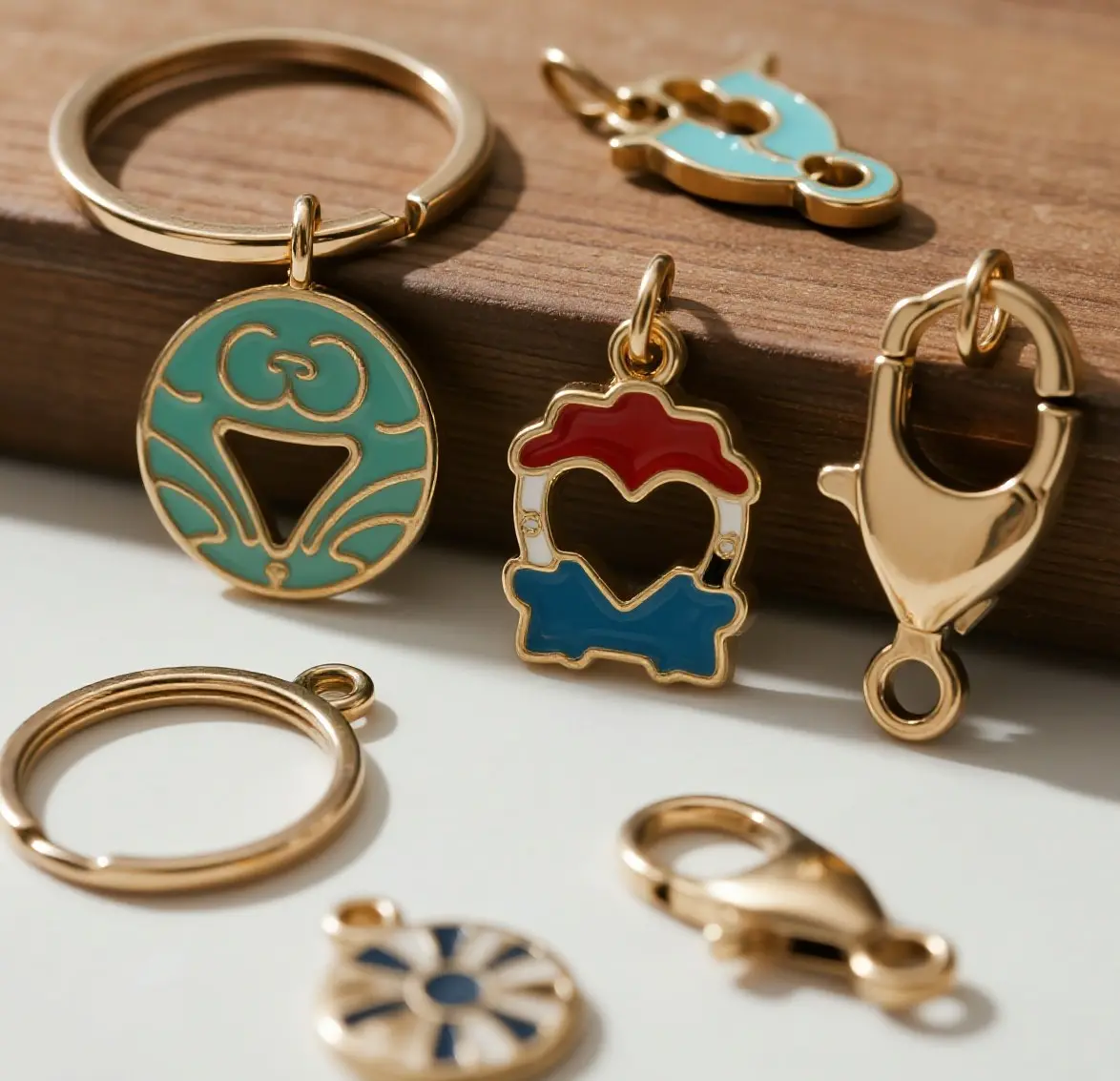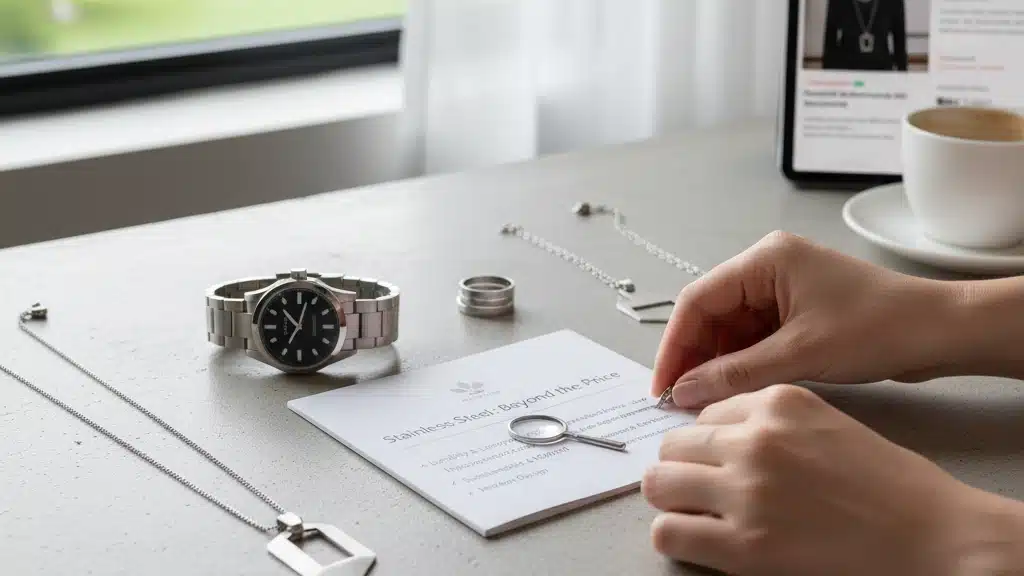Jewelry Hallmarks Meaning: A Guide to Purity and Spotting Fakes

Key Takeaways
- Jewelry hallmarks are crucial stamps indicating metal quality, source and maker, supporting buyer confidence and verification globally.
- When you know whether you’re looking at purity marks, maker’s marks, assay office stamps, date letters, or control marks, you can make intelligent decisions and identify quality jewelry.
- Hallmarking standards have evolved worldwide from medieval guilds to modern regulations, providing greater protection and transparency to buyers and sellers.
- Understanding hallmarks is not only useful for distinguishing authentic precious metals but can add to the resale and provenance value of jewelry.
- There are practical things buyers can do — check hallmarks, google makers, consult experts — that keep them from buying fakes and put them into genuine pieces.
- Whether you’re a collector, an investor, or just looking to buy jewelry from other countries, it pays to know a little bit about the different hallmarking systems.
Jewelry hallmarks meaning are tiny stamps on jewelry that indicate the metal, maker and sometimes the date or country of origin. These hallmarks assist individuals in identifying whether an item is gold, silver or platinum and if it’s authentic or counterfeit. Others date to famous brands or countries with rigorous regulations. Recognizing these marks aids consumers and retailers in making informed decisions about jewelry.
What are jewelry hallmarks?

These vintage jewelry hallmarks indicate what type of precious metal it’s made from and how much of it. Such jewelry stamps reveal the manufacturer, time period, and sometimes even hint at major events from that era. Hallmarks provide important information regarding the metal purity marks and assist consumers in determining its worthiness and credibility. For most, these stamps are a rudimentary means of confirming authenticity.
|
Feature |
What it Shows |
Why It Matters |
Protection Offered |
|---|---|---|---|
|
Purity Mark |
Metal quality, fineness |
Confirms real metal content |
Guards from fake metals |
|
Maker’s Mark |
Who made it |
Tracks origin, boosts value |
Helps spot counterfeits |
|
Assay Office Mark |
Where tested, who tested |
Verifies authenticity |
Legal proof in some areas |
|
Date Letter |
Year made |
Aids in dating and value |
Backs up age claims |
|
Control Mark |
Passed quality checks |
Adds trust |
Shows item meets standards |
1. Purity mark
A purity stamp indicates the type and composition of metal in jewelry, serving as a quick reference for identifying solid gold, silver, or platinum jewelry. Each metal can be refined to a certain standard, displayed by numbers or hallmark symbols. Gold jewelry is commonly stamped with 18K, 14K, or 750, while silver features marks like 925 for sterling, and platinum jewelry may be marked as 950PT or PLAT. Being aware of these jewelry markings assists consumers in making prudent purchases, particularly when seeking vintage jewelry or antique items.
2. Maker’s mark
A maker’s mark, often a hallmark symbol or initials, is a distinct engraving stamped by the jeweler or manufacturer who produced the jewelry piece. This identification is crucial as it connects the vintage jewelry back to its origin, enhancing its value and traceability. Recognizing vintage jewelry hallmarks can significantly impact the piece’s worth and your confidence in its authenticity. To learn more about a maker’s mark, explore online databases, jewelry mark books, or consult a qualified jeweler. Always seek out clear, well-struck marks, as they provide valuable clues about the jewelry’s quality!
3. Assay office
Assay offices test and verify precious metals, including gold jewelry and platinum jewelry, to ensure the purity is genuine. Once the piece is approved, they imprint their own hallmark, which serves as a valuable clue for hallmark identification. This third-party verification is a strong indicator of legitimacy. In the UK and a few other locations, it’s required by law to have gold, silver, and platinum hallmarked by an official assay office, helping you better identify fakes or mislabeled pieces.
4. Date letter
A date letter is a hallmark symbol that indicates when the vintage jewelry was manufactured, allowing buyers and collectors to determine the age of the piece—a crucial element for its value. Various hallmark systems change the shape or font of date letters every year or decade, necessitating a cheat sheet for vintage jewelry hallmarks identification. For example, a specific letter in a square may indicate 1990 in one country, but represent a completely different year or metal in another. Therefore, checking date letters across systems is vital for identifying real vintage gems.
5. Control mark
A control mark indicates that the jewelry, particularly vintage jewelry, has undergone additional quality inspections. This hallmark symbol provides assurance that the item is authentic and of high quality. Control marks add another measure of faith, especially if the jeweler is of a renowned caliber. Having a control mark aids customers in identifying quality craftsmanship, even when other jewelry markings are worn or illegible.
The story behind the stamp

Jewelry hallmarks are not just symbols; they represent a rich history of craft, commerce, and confidence. These vintage jewelry hallmarks aid in vintage jewelry identification, revealing the composition, creator, and date of origin of each piece. They also trace the evolution of customs across cultures and regulations. Today, hallmarks protect consumers and celebrate the craftsmanship behind every jewelry piece.
Medieval origins
Hallmarking began in the middle ages, primarily as a means to prevent fraud in gold and silver dealing. With valuable metals changing ownership in bustling markets, vendors occasionally blended less costly metals to swindle purchasers.
Guilds, like the Goldsmiths’ Company in England, established rigid regulations. In 1300s England, goldsmiths had to register with the guild and mark their pieces. These stamps indicated the piece’s artisan and its metal value. This was verified by the London Assay Office, ensuring that each piece conformed to established standards. Early hallmarks provided purchasers with a means of having confidence that what they bought was authentic, not counterfeit.
We look back at mark-making milestones, such as the 1300s law in England, that turned hallmarking into a legal necessity. This established the pattern for comparable systems in Europe and around the world. Eventually, other nations constructed their own regulations, with guilds and marks specific to their area.
Modern standards
Today, hallmarking has had to keep up with our world market and new tech. These days, 10K, 14K, 18K and 24K, or “925” for sterling silver are pretty standard everywhere, and makes it obvious what a piece is. Most countries have accepted world-wide standards, so a 14K ring in one country is equivalent to another.
The Vienna Convention on the Control of the Fineness and the Hallmarking of Precious Metal Objects established one system for multiple countries. This is safer and easier for cross-border trade for buyers. Modern stamps indicate metal type, purity, maker’s mark, and even the year made, which aids with traceability and keeps counterfeits off the market.
Technology such as lasers and microstamps now allow imprints to be added to small areas of jewelry. Stamps can be on clasps, ring bands or pendant backs. With a jeweler’s loupe or a phone camera, anyone can verify authenticity.
Hallmarks and heritage
Hallmarks are history. They demonstrate evolution in technology and attire. Makers’ marks can tie a piece to a known jeweler or brand, which aids with authenticity and value.
Some stamps signify more than metal type—they can authenticate that a piece is by a star designer or from a given era. This is important for collectors and museums, who use hallmarks to track where something came from.
Consumer protection
Hallmarking protects consumers by battling counterfeits and substandard metals.
Sharp imprints provide peace of mind and make trading jewelry ethical.
Contemporary legislation supports hallmarking, therefore purchasers may trust what they observe.
Decoding precious metal purity
As a buyer who wants to make informed choices, understanding precious metal purity levels impacts more than just price; it also influences how vintage jewelry wears, how it looks, and how it fits into family heirlooms. Hallmarks imprinted on the metal act as valuable clues, assisting consumers in vintage jewelry hallmarks identification to determine value and genuineness.
Gold
Karat is the measurement of how much pure gold is in a piece. The greater the number, the purer the gold – 24K being pure. Pure gold is soft, so it’s commonly alloyed with copper or silver to provide strength for jewelry. For instance, 14K is 58.3% gold, the remainder being alloy. European markets utilize numbers such as 750 for 18K, indicating 75% gold.
Gold hallmarks inform you what you’re purchasing. A piece engraved ‘999′ is pretty darn close to pure. 750″ = 18K, ‘585’ = 14K These stamps assist consumers in cutting through the fuss and detecting genuine gold. Gold alloys are good to be familiar with, too, as they help jewelry wear better and occasionally change its color, like rose or white gold.
Silver
Sterling silver is popular for jewelry. It’s 92.5% silver, marked “925”. The 925 hallmark indicates the piece is real sterling, not just silver plated. You’ll find other marks which can indicate where and when it was crafted, particularly in jurisdictions with rigorous regulations, such as the UK or continental Europe.
Caring for silver jewelry helps it last:
-
Store pieces in a dry place to avoid tarnish.
-
Clean with a soft cloth, not harsh chemicals.
-
Wear often; skin oils can slow tarnish.
-
Remove before swimming or using cleaning products.
Platinum
Platinum purity follows the “Pt” stamp as a number. Pt950 denotes 95% platinum, typical for fine jewelry. This renders platinum hard and more resistant to abrasion. The Pt950 hallmark is a mark of distinction.
Watch out for counterfeit platinum. Real platinum is heavy and doesn’t chip. Search for clean, official stamps and purchase from vendors who can decode them. Platinum is more expensive than gold or silver, but it’s incredibly durable and holds its appearance for years — which is why it’s a solid long term buy.
- Always look for clear hallmarks before buying.
- Ask sellers for written proof of metal content.
- Learn the most common purity marks for each metal.
- Compare marks with official standards in your country.
- Purchase from reputable shops that have explicit return policies.
A global language of marks

Hallmarks are a global language of marks that represent the purity and genuineness of gold jewelry, silver, and platinum. Every country has developed its own hallmarking tradition, dictated by history and commerce. Despite the differences, the goal remains the same: to assure buyers about what a piece contains and where it originated.
The 1972 Vienna Convention aimed to standardize these practices, easing global commerce and helping collectors trust their purchases. Hallmarks, such as the “925” for sterling or CCM (Common Control Mark) for signatory countries, have become essential for accountability and traceability. For collectors, understanding vintage jewelry hallmarks identification is crucial, as it can reveal the year, origin, or even the maker of a piece, instilling confidence and facilitating smart investment in fine jewelry.
|
Country |
System Type |
Main Features |
Example Mark |
|---|---|---|---|
|
UK |
Compulsory |
Date letter, maker’s mark, assay office, fineness |
Lion Passant, 375 |
|
France |
Compulsory |
Guarantee mark, fineness, maker’s mark |
Minerva head, 750 |
|
Germany |
Voluntary |
Fineness, manufacturer’s mark |
925, crescent moon |
|
USA |
Voluntary |
Maker’s mark, fineness, trademark |
14K, Tiffany & Co |
|
Switzerland |
Compulsory |
Fineness, responsibility mark, hallmark office |
Helvetia head, 750 |
|
India |
Compulsory |
Bureau of Indian Standards (BIS) mark, purity |
BIS, 916 |
Compulsory systems
Compulsory hallmarking systems imply that legislation demands all precious metal articles to bear specific marks prior to sale. Among other things, these laws exist to safeguard purchasers by ensuring that gold, silver and platinum articles correspond to the stated purity. Nations with mandatory hallmarking have state or licensed assay offices which assay and hallmark the jewelry.
It prevents fraud by making it difficult to market counterfeit or substandard metals. In countries such as the UK, France and India, rigorous hallmarking provides buyers with assurance. Marks vary from country to country—some use symbols, some numbers or additional marks such as a date letter. Government agencies have the task of monitoring and enforcing these regulations, which maintains quality and fosters confidence in the industry.
Voluntary systems
Voluntary hallmarking means jewellers can elect to mark their pieces, even if the law doesn’t require them to. That’s typical in the US and Germany. Brands can stamp their gold or silver with fineness and their logo to take pride in quality.
For jewelers, this is a mechanism to elevate their brand and make customers dare to trust them. These voluntary marks can help make jewelry more appealing to consumers seeking evidence of quality. A ring with ‘18K’ on it from a famous brand can be worth more than one without. Companies such as Tiffany’s and Cartier use voluntary marks to demonstrate their quality.
Why global standards matter
Collectors and investors rely on hallmarks to verify its authenticity. These marks could indicate its origin at a specific time, thus being more traceable. This is crucial in a global market, where jewelry crosses borders and languages.
Several countries teamed up for universal standards, like the Vienna Convention and the Common Control Mark. These simplify the exchange and verification of jewelry across locations.
How to spot fake jewelry
It doesn’t only save you money; it’s about ensuring you receive your money’s worth and don’t get burned. Vintage jewelry hallmarks provide an initial protection, as they are little stamps indicating the type of metal and purity. Being suspicious of red flags and knowing hallmark symbols is crucial.
Missing marks
The absence of a hallmark is an even better red flag. Real jewelry like sterling or gold will typically have a tiny stamp like “925” or “14K” on it, indicating the metal’s purity. Without these marks, it’s difficult to know what you’re purchasing.
Hallmarks count. They assist demonstrate a piece’s worth and genuineness. If a ring or necklace doesn’t have its expected stamp, it’s wise to beware. Sometimes, older or handmade items might not have a hallmark, but those are edge cases. If there’s no stamp, request proof or paperwork from the seller. If they can’t produce it, leave. Missing marks are a hallmark of counterfeits or cheap pieces. When shopping, always look at the inside of rings or clasps of bracelets and necklaces for these stamps. Their lack should give you pause and make you inquire more.
Sloppy stamps
Messy or unclear stamps can be a big hint that something’s up. A genuine hallmark will be crisp, consistent, and legible. If you notice a light, patchy or slanting imprint, that’s typically shoddy workmanship or counterfeit.
Verify the hallmark with a magnifier. It should be flat and consistent with the brand’s established aesthetic. If the mark is smeared or appears hand-scratched, it’s wise to be suspicious. This degree of precision can lower a piece’s worth. Even if the jewelry weighs or looks beautiful, a careless mark is an indicator to be inspected. Come armed with additional evidence or consult a professional if you’re suspicious.
Inconsistent signs
If the hallmarks don’t match or appear different from one to the next, that’s an issue. Convention says that all markings on an authentic item should complement each other in font, scale and position. If you notice varying fonts, misplaced stamps or impressions in strange locations, this should be suspicious.
Compare with verified samples or brand guides. Irregularity is a warning sign, prevalent in counterfeit jewelry. Professionals, such as appraisers, know how to identify them. For the high ticket items, having a professional check it can spare you a lot of grief down the road.
Verifying online
Google it before you, particularly online. Verify seller reviews, research hallmark guides and consult forums to see what other people have discovered. Online forums and Facebook groups post pictures of genuine and counterfeit hallmarks.
Don’t trust deals that are too cheap. Utilize online resources to verify if a mark is authentic or counterfeit. When in doubt, stick to trusted sellers and always ask for certificates. Be wary of sketchy sources.
The hallmark’s hidden value
A hallmark isn’t simply a tiny imprint. It’s a trust mark that transforms the way people view, purchase and sell jewelry. The worth isn’t immediately obvious at first glance, but it defines the precious metals world in which collectors and buyers and sellers all operate.
Hallmarks are instrumental in improving the secondhand value of jewelry. If a piece has a distinct, official hallmark, it provides evidence that the metal is genuine and of the indicated purity. This validation is what makes customers willing to pay a reasonable price. Example: an 18k gold ring with a hallmark will almost always sell for more than one without. That’s because the hallmark serves as a quality assurance check that buyers and sellers can rely on, reducing suspicion and speculation.
These marks are connected to jewelry history, as well. The tradition of hallmarking dates back centuries. Medieval goldsmiths in London, for instance, met at the Goldsmiths’ Hall, hence the term “hallmark.” Over time, these marks became a means to identify the age and the location where a piece was made.
French silver with a Paris mark from the early 1900s, for instance, speaks volumes about both its maker and its era. For collectors and historians, hallmarks help identify where a piece came from and its past, occasionally connecting it back to important moments in art or culture.
For collectors, a hallmark is crucial for verifying a piece’s origin. Knowing maker, year or region can drive up the price, particularly for rare or antique pieces. Just as a Russian Fabergé egg with an identified master’s mark is far more valuable than a comparable piece without one. This detail in these marks counts.
Certain countries employ stringent codes, sometimes combining numbers, letters or minuscule icons. Areas like the UK have had hallmarking laws for years, while places like India have just recently implemented them. That buyer and collector education is crucial — you have to know what each mark means, based on where the jewelry originates from.
Hallmarks influence the way customers perceive and desire a piece. A transparent, reliable hallmark cuts concerns about counterfeit metals or fraudulent assertions. When people see a familiar hallmark, they know the product adheres to minimum thresholds of purity and quality. That trust can make a piece more desirable, even if it appears plain next to more embellished jewelry.
Conclusion
Jewelry hallmarks speak plain truths. Little stamps on a ring or a chain can tell you what metal the piece is made from, who crafted it, and even where it originated. A gold band scratched “750” signifies 18-karat. Or a silver necklace with “925” on it means it is real silver.
These marks assist people identify genuine from counterfeit, even in vintage or secondhand jewelry. Each country stamps jewelry in its own way, but the goal stays simple: to show what’s inside and build trust. Smart shoppers look for these marks, so do. For additional pointers on seeking genuine jewelry value, reference other guides or consult with specialists who can assist with inquiries or further action.
Frequently Asked Questions
What is a jewelry hallmark?
A jewelry hallmark is a tiny imprint on a piece of vintage jewelry, displaying crucial information such as metal type, purity stamps, and occasionally the manufacturer’s mark, which helps purchasers believe the piece is genuine.
Why are hallmarks important in jewelry?
Hallmarks, including gold hallmarks and vintage jewelry hallmarks, safeguard purchasers by authenticating the jewelry’s metal purity and provenance. This aids in deterring counterfeiting and guarantees you receive what you’re paying for or selling.
How can I read jewelry hallmarks?
Search for minuscule emblems, digits, or characters on your vintage jewelry. Similar to how a book has an ISBN, jewelry hallmarks denote specific details, such as metal purity or the maker, with guides available for vintage jewelry hallmarks identification.
What do numbers like 750 or 925 mean on jewelry?
These numbers indicate metal purity, with “750” signifying 75% gold (18 karat) and “925” representing 92.5% silver (sterling), essential for vintage jewelry hallmark identification.
Are hallmarks the same in every country?
No, they have different hallmark systems in each country, with unique vintage jewelry hallmarks and standards. Most countries nowadays adhere to international standards for greater transparency in jewelry markings.
Can fake jewelry have hallmarks?
Yes, costume jewelry can have bogus hallmarks on it. Therefore, always buy from reputable dealers, and when in doubt, have a professional jeweler double-check the jewelry stamps and test the metal purity.
Do hallmarks affect the value of jewelry?
Hallmarks can add significant value to vintage jewelry, as they ensure authenticity and metal purity. Collectors and buyers frequently pay extra for hallmarked pieces, particularly vintage rings or hard-to-find items.
Related Posts

Understanding Wholesale Jewelry Pricing and How It Works
Understanding Wholesale Jewelry Pricing and How It Works When people see a ring that costs $6 wholesale and retails for $59, they often

The Art of Shine in Jewelry Polishing and Plating Techniques
Discover how polishing and plating transform modern jewelry with expert techniques for lasting shine and elegant finishes.

Τι Νοιάζει Πραγματικά τους Αγοραστές Ανοξείδωτου Κοσμήματος Εκτός από την Τιμή
Τι πραγματικά νοιάζει τους αγοραστές ατσάλινων κοσμημάτων πέρα από την τιμή ανθεκτικότητα υποαλλεργικά υλικά και μοντέρνο στυλ.
